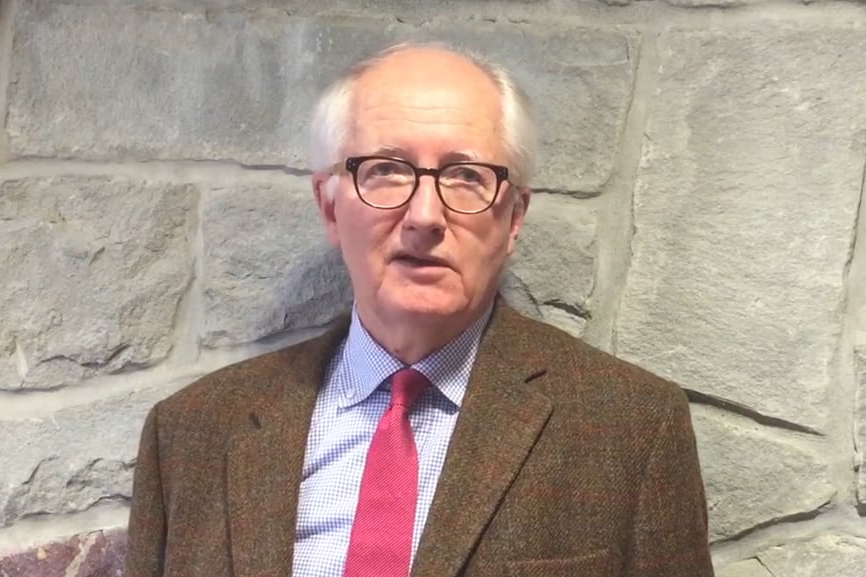 FROM THE HIGGS BOSON IDENTIKIT TO GRAVITATIONAL WAVES, ONE WEEK AT EPS HEP 2017 CONFERENCE
FROM THE HIGGS BOSON IDENTIKIT TO GRAVITATIONAL WAVES, ONE WEEK AT EPS HEP 2017 CONFERENCE
Interview with Rüdiger Voss, president of the European physical society. He has also been the Head of International Relations at CERN from 2013 to 2015.
The European physical society (EPS) was established in 1968 and represents over 120,000 physicists organised in 42 different national societies. On July 5, one of its most prestigious conferences worldwide, the EPS conference on High Energy Physics (HEP), came back to Italy after over thirty years. It took place at Lido Island in Venice, which hence became the gathering point of international top physicists for one full week. The conference dealt with some of the most fascinating themes in physics research: from the origin of our universe to the Higgs Boson identikit, from the hunt for dark matter to the properties of the elusive neutrino, from New Physics to gravitational waves.
The 2017 edition of the EPS conference on High Energy Physics provided a vast scientific program. Do you think there has been a leading topic?
This year's program was, without any doubt, exceptionally rich and well organised. LHC physics has been in the focus of attention. Once again, the Higgs discovery, first announced in 2012, was one of the main topics of the conference. A lot of new results on Higgs Boson properties were presented. A major one was the first evidence of the Higgs decaying into one quark and one anti-quark beauty (H→bb). Furthermore, new precision measurements of the Higgs mass were shown. Overall, there is increasing evidence that the particle whose discovery was announced in 2012 corresponds to the Higgs Boson, as it is predicted by the Standard Model. However, during the conference, it also emerged that many more results and data are needed to establish that this particle fully corresponds to the Standard Model Higgs. Otherwise, if small differences from the Standard Model predictions are detected, windows to New Physics may be opened.
So the Higgs was surely one of the main topics of the conference, have you witnessed other interesting results coming from the Large hadron collider at CERN?
LHC physics is not just the Higgs boson, there have been many new results which reflect the fantastic performances of the collider in 2016, but also in 2017. An example is the beautiful discovery announced by the LHCb collaboration of a new doubly charmed hadron. This discovery could allow us to understand better how the strong interaction works.
And what about physics research other than the LHC?
Of course high energy physics is not just LHC physics, there are many other areas which continue to work hard and produce interesting results. An example is neutrino physics. Vigorous new programs for neutrinos studies are under preparation in particular in Japan, in the United States and in Italy. For example at INFN Gran Sasso National laboratories there several experiments dedicated to neutrinos studies that are undergoing further improvements.
Moreover this conference has given a lot of room to new exciting results from neighbouring fields such as gravitational physics and cosmology. Here, of course, the recent discovery of gravitational waves rightly took a very prominent place. Not to forget other areas such as particle astrophysics and dark matter searches.
This conference has been a demonstration of the strong interdependences and synergies among these neighbouring fields. The various disciplines that make up fundamental physics are coming closer and closer. This is fundamental to establish a complete picture of the universe, which goes much beyond the current Standard Model of particle physics.
Have you had the chance to hear some of the reactions of conference participants?
The excellent program of this conference has been reflected by an exceptional participation of about a thousand scientists from all over the world, not just from Europe. I think we have not seen participation like this in many years. All participants I talked to were impressed by the excellent scientific and local organization.
As the president of the European Physical Society, I would like to pay a tribute to the excellent work of the international organising committee and the board of the High Energy Particle Physics Division of the EPS (EPS HEPP) and, in particular, to its outgoing chair Yves Sirois. The success of this conference has been a powerful demonstration of the excellent leadership Yves has provided to the European Physical Society and to the High Energy Physics Division. I would also like to thank from the bottom of my heart the Local Organising Committee, chaired by Mauro Mezzetto and Paolo Checchia, and their many collaborators in particular from the INFN Padua Division who have been working very hard over the past two years to make this conference a success.
The main prize awarded by the EPS HEPP division during the conference was to a breakthrough development in detector technology. Do you think the wind is changing and the relevance of technical applications for the success of research is going to be formally recognised?
I do not think that this reflects a change of wind. The history of particle physics, but also that of many other branches of our science, shows that there can be no breakthrough discoveries in fundamental science without breakthrough developments in accelerator and detector technologies. For this reason, even the Nobel prize was awarded to key technological innovations more than once. Some examples are the Nobel prizes awarded to Donald Glaser for the bubble chamber, Simon van der Meer for stochastic cooling, or Georges Charpak for the drift chamber. The award of the 2017 High Energy and Particle Physics prize to Erik Heijne, Robert Klanner and Gerhard Lutz for their pioneering contributions to the development of silicon microstrip detectors was timely and appropriate: the LHC experiments and their ability to process the enormous data rates provided by this machine would not be possible without the silicon detector technology.



